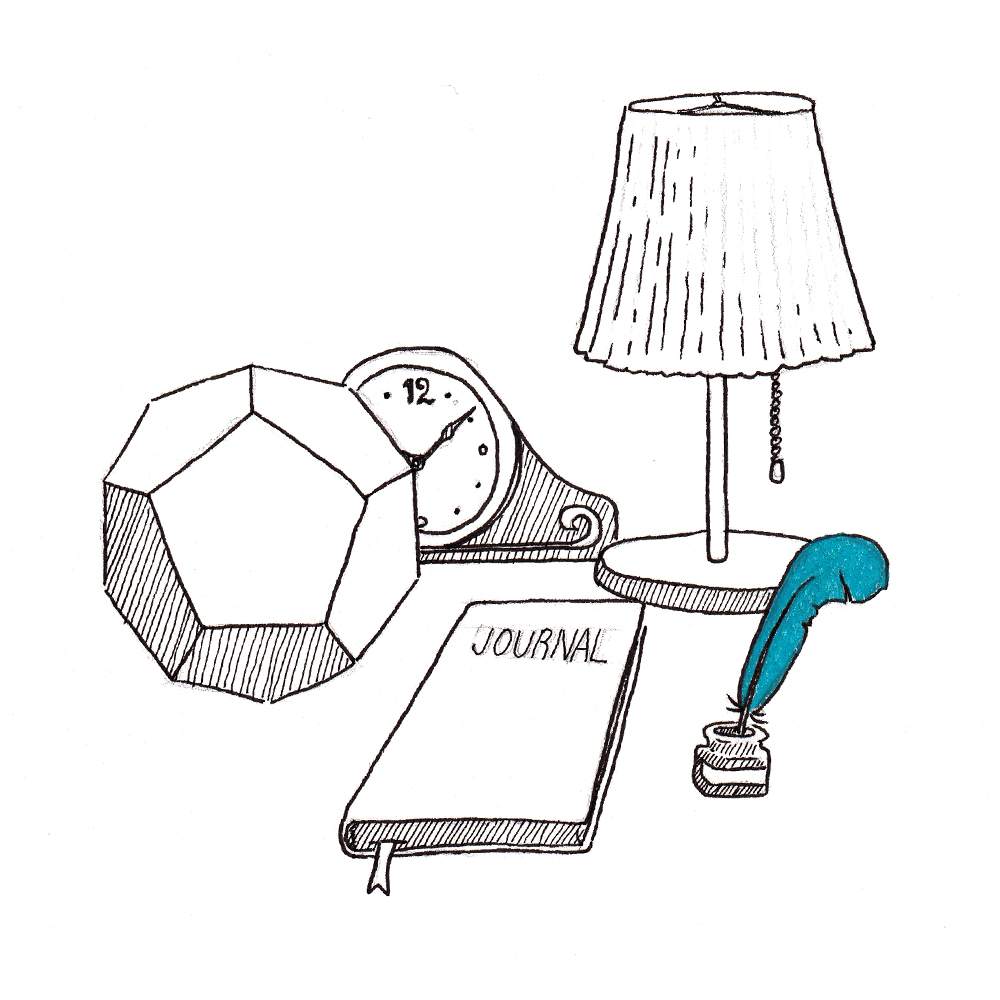8 Golden Rules of Web Copywriting: How to Nurture and Convert with Smart Communication
Are you looking to improve your communication efforts to nurture and convert more customers? If so, here are the eight golden rules of web copywriting that will help you reach your goals. The post 8 Golden Rules of Web Copywriting: How to Nurture and Convert with Smart Communication appeared first on Scoop.it Blog.


Web copywriting can be an exceptionally intricate process. And it can take years to perfect your technique. Yet, getting it right holds the key to positioning your brand and products and, consequently, reaching your conversion goals.
With this in mind, it’s no surprise that business owners regularly seek opportunities to outsource the copywriting process. A recent survey from Semrush discovered that 67% of businesses used AI tools for content marketing and SEO in 2024. 14% worked with freelancers. And 17% hired in-house writers to produce copy.
Yet, despite having access to all of these options, 79% of business owners still had to put on their copywriting hats regularly — whether due to budget constraints or because they wanted the job to be done well.
Are you looking to improve your communication efforts to nurture and convert more customers? If so, here are the eight golden rules of web copywriting that will help you reach your goals.
Keep It Simple
One of the biggest mistakes you can make when writing copy for your website is thinking that complexity, likability, or originality equals conversions. But that couldn’t be further away from the truth.
Sure, beautifully written text can arouse an emotional response from your target audience. It can make your brand stand out. It can even inspire concrete action, but only in the appropriate context (usually toward the bottom of the sales funnel).
In most situations, however, simplicity reigns supreme.
When trying to engage your target audience — especially for the first time — don’t try to do it with cutesy messages, metaphors, or wordplay. Instead, tell them what you offer and how that matters to them.
For inspiration, check out how Eden Emerald Buyers Agent does it. This brand dedicates the entirety of its hero section to telling web visitors — in very simple terms — that its services aim to help prospects find their dream home and save time and money during the purchase process.
Source: eebuyersagent.com.au
Note the absence of jargon, figures of speech, and complex sentence structures. Ultimately, EE Buyer’s Agent knows its target audience consists of regular people. And that means that the best way to help them understand the value of the brand’s offer is to make it as accessible as possible.
Chances are, the same rule applies to your brand as well. Of course, you might be able to get away with slightly more technical language. But that will hugely depend on your target audience (as well as your prospects’ position in the buyer’s journey).
If you’re looking to optimize your website copy in a way that will help nurture and convert more leads, err on the side of caution and keep things simple.
Write for Skimmers and Avoid Walls of Text
Another easy copywriting hack you can implement to any of your web pages (or other digital distribution channels, for that matter) is to break up walls of text into smaller, more manageable sections.
The reason this tactic works is simple. People don’t usually read text word-for-word when consuming online content. Instead, they skim and scan pages until their eyes land on a keyword or section that appears relevant to their experience. They do this according to specific reading patterns. And they often form their reading behavior around multimedia content, prioritizing images over text.
So, how can you use this knowledge to improve your website copy’s ability to nurture and convert customers?
Well, one thing you can do is adapt your page layouts to align with this type of behavior.
Break up walls of text with headings. Use images and multimedia to aid comprehension and prevent fatigue. And use formatting (such as bulleted lists) to facilitate content understanding.
For example, check out how Topview does it on its homepage. Knowing that complex product descriptions often go ignored, this brand optimizes its copy for quick scanning. It uses formatting and imagery to visually highlight keyword phrases.
Each text section is short and to the point – ideal for visitors at the top end of the funnel who are not quite invested enough to read through reams of descriptive text to find out of the product is right for them.
Source: topview.ai
The great news is that you can easily apply these principles to your website. Even something as simple as shortening the sentences and paragraphs in your web copy can go a long way in improving readability and accessibility, making it far easier for web visitors to extract value from your content.
Address Conversion Obstacles and USPs Early
Today’s consumers have almost unlimited choices. And they want the best of the best — regarding price, quality, and convenience.
So, if you want to use web copy to convert prospects into loyal customers of your brand, you have to convince them that your product or service genuinely is the best solution to their needs. And you need to do that quickly, considering that the average adult has an attention span of 8.25 seconds.
To do this, highlight everything that makes your brand better than the alternatives. And address any potential conversion barriers that could cause web visitors to choose your competitors.
The great news is that you can do this by crafting simple yet alluring USPs that remove common conversion obstacles.
By using copy to remove your target audience’s worries about shopping with your brand, you can effectively position your solutions as the best option in the market. Plus, you can elevate web visitors’ chances of converting into customers, potentially shortening the sales cycle.
The key to getting it right? Keep it short, engaging, and simple. And explore opportunities to supplement the power of words with visuals.
For inspiration on how to do this, check out EXT Cabinets. Knowing that visuals elevate text, this brand backs up its core promises with trust badges inside and below the hero header. These 2-3 word statements differentiate EXT’s offer from that of its competitors. They remove common buyer concerns. Finally, they establish attractive selling points early in the buyer’s journey, maximizing the chances of web visitors becoming customers.
Source: extcabinets.com
Focus on Benefits, Not Features
What do consumers want from brands?
Research shows that they want a personalized, hyper-relevant experience that makes them feel seen, valued, and special.
So, if you’re trying to elevate the effectiveness of your web copy at nurturing and converting leads, it’s a good idea to adopt a customer-first approach.
After all, the most effective copy doesn’t just describe your products in a way that positions them as high-quality. Instead, your copywriting goal (no matter your distribution channel) should be to demonstrate why your offer represents the best choice for the person evaluating your offer.
A great way to accomplish this effect is to approach the copywriting process by prioritizing user benefits over product features.
By investing in copy that deeply resonates with your prospects, you can make it far easier for them to understand your offer’s value. You can encourage them to imagine themselves using your products or services. And you can even awaken an emotional response to the idea of interacting with your solutions.
For inspiration, check out how UF PRO does it on its Storm Chaser product page. Instead of describing the materials it uses to achieve waterproofness, the brand focuses on how those materials affect the wearer — they allow free, comfortable movement in changing conditions.
Source: ufpro.com
Make Measurable Promises
We have established that shoppers respond to relevant, benefit-oriented copy better than to generic claims.
However, if you’re looking for web copywriting tips that can help you elevate conversions, consider adding a dose of measurability to how you describe benefits.
Consumers want solutions that work. And they’re willing to pay extra if it means a higher level of effectiveness. According to a 2023 survey, 85% of people would pay more for beauty products with proven benefits.
With this in mind, when producing copy for your digital channels, try supporting your value propositions with data — like statistics or figures — that backs your claims.
This approach will help web visitors visualize the outcomes they could secure by investing in your products. It will also put your prospects into a mental state where they’re more likely to be receptive to your messaging.
For instance, SaaS brands do this marvelously by using percentages to prove their benefit as a metric.
If you check out the ADA homepage, you’ll see that the brand shows off stats to communicate user benefits. Then, it takes a step further by highlighting case studies that cite real-world results regarding the effects of using the solution.
Source: ada.cx
Or, if you’re looking for inspiration on implementing this tactic for your service brand, check out Christensen Law. This business clearly states the amount of money it has won for clients in court cases, using these figures to establish its ability to successfully solve its target audience’s pain points.
Source: davidchristensenlaw.com
Let Existing Customers Do the Talking
Of course, if you want to maximize the conversion potential of your web copy, it’s a good idea to let your existing customers do the talking — at least from time to time.
After all, research has shown that user-generated content performs much better than branded resources in building trust and transparency. So, if you want to guarantee your website copy helps your conversion efforts, consider giving the podium to your satisfied customers.
By incorporating social proof content in your digital footprint — simple reviews, detailed testimonials, personal customer stories, or in-depth case studies — you can present web visitors with real-world data regarding the effectiveness of your solutions.
Plus, you can assist them during the evaluation stage of the buyer’s journey, seeing that they’re likely to actively seek out this type of content when researching your products.
In addition to the well-established, standard methods of displaying social proof on your website, it’s also a good idea to showcase user-generated copy on your other digital channels. This distribution tactic maximizes the visibility of the content, allowing your brand to engage prospects even before they’ve entered the buyer’s journey. Check out how Matomo did it in the example below.
Source: facebook.com
CTA Labels Need to Empower Your Visitor
Calls to action are some of the most commonly overlooked elements of web copywriting.
Sure, a standard “buy now” or “learn more” message can drive conversions. However, expert copywriters know that inspiring consumer action takes much more than a few overused phrases.
Essentially, persuading web visitors (or readers) to convert takes two things. Firstly, you need to attract web visitors’ attention to the CTA element you want them to interact with. Secondly, you need to convince them that the value you offer is more prominent than the safety of not taking action.
Now, simply adhering to the best practices of crafting CTAs will do the trick regarding the first step. But if you want your website copy to be genuinely effective at inspiring consumer action, you will have to adopt an approach that empowers your visitors.
By creating CTA messaging that puts your audience in control of their buyer’s journey, you’ll encourage them to visualize the results of converting with your brand. This copywriting trick can also establish a direct connection between user action and received value, helping your prospects see that they are the key to making their aspirations come true.
Check out how Real Estate Skills does it. By employing non-standard CTA copy like “Yes, I want to attend the free webinar,” the brand turns web visitors from passive observers into main characters in a narrative. This automatically makes web visitors more inclined to take action. Plus, it makes them feel important, which is a great way to encourage a positive emotional connection to the brand and its offer.
Source: realestateskills.com
Accompany Your Sales Copy with Imagery That Reinforces Its Message
Finally, as you explore methods to elevate the effectiveness of your web copy in nurturing and converting customers, don’t forget that words are powerful. But a picture is worth a thousand words.
In fact, research has shown time and again that humans respond more quickly and powerfully to visuals than text. Moreover, the emotional impact of an image can directly affect buying behavior. If you want your copy to sell, consider accompanying it with relevant imagery that supports your value propositions by triggering a desired emotional response.
For an example of how to do this, check out SopranoVillas. Knowing that its audience seeks luxurious travel experiences, this brand complements its homepage copy with aspirational visuals showing off stunning locations that elicit an aspirational (even FOMO) response among web visitors.
Source: sopranovillas.com
Or take inspiration from WeWork. Knowing its target audience needs simple solutions to complex workspace problems, it regularly includes images next to its value propositions. What stands out about this brand’s approach is that each photo includes happy social presences, automatically associating WeWork’s offer with success and positioning them as the ideal solution to a frustrating pain point.
Source: wework.com
Final Thoughts
Even though it takes practice to get it right, web copywriting doesn’t have to be difficult. In fact, by adhering to the eight simple rules outlined in this guide, you’re guaranteed to see positive results.
Of course, to maximize your site’s chances of inspiring web visitors to convert, you’ll need to align your messaging with your audience’s wants, needs, and priorities.
So, before you get down to writing, do your best to research your prospects. Identify their pain points, concerns, and aspirations. Explore ways to craft copy that will help them see you offer a solution and inspire them to act.
The post 8 Golden Rules of Web Copywriting: How to Nurture and Convert with Smart Communication appeared first on Scoop.it Blog.
![]()




























































































































![Are AI Chatbots Replacing Search Engines? AI vs Google [New Research]](https://www.orbitmedia.com/wp-content/uploads/2025/05/How-often-are-we-using-AI-chatbots_.webp)
































